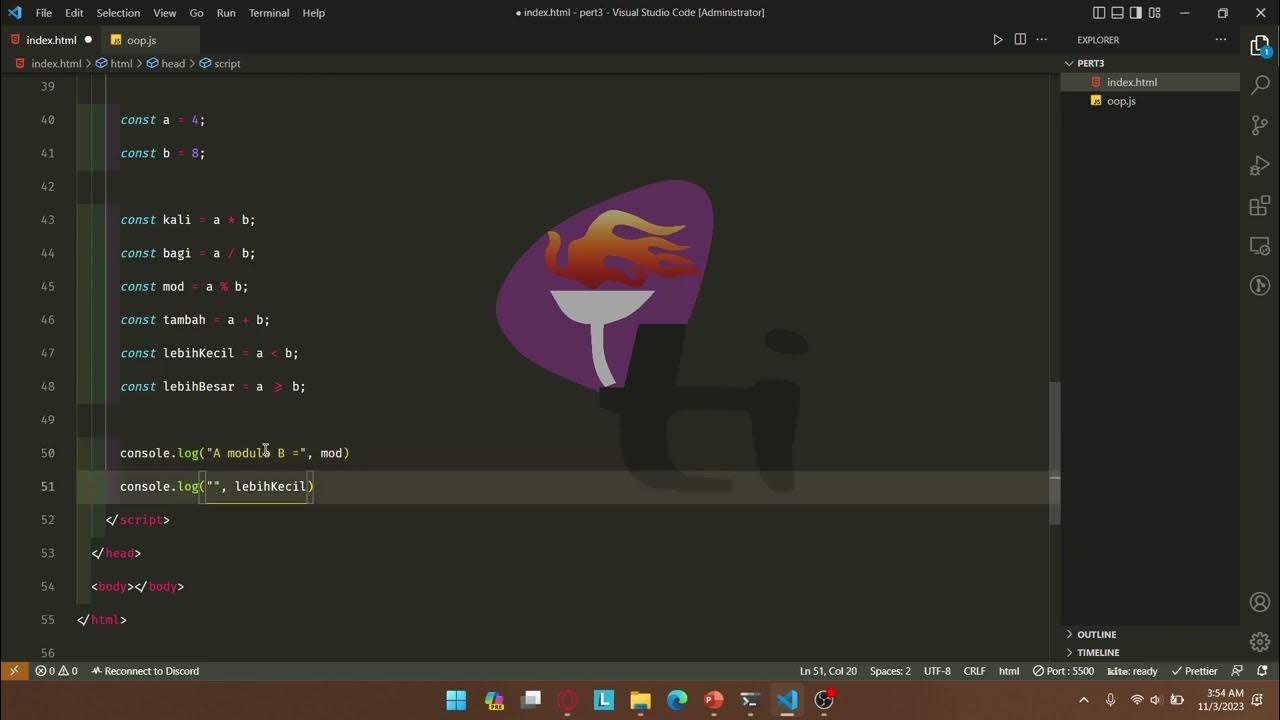Top 10 JavaScript Interview Questions EXPLAINED! | Tanay Pratap Hindi
Summary
TLDRThis video script provides valuable insights for preparing for JavaScript interviews, focusing on key topics like `setTimeout`, event loops, `let` vs `const` vs `var`, closures, functional programming, and the `this` keyword. It highlights common interview questions and explains how to approach them, stressing the importance of understanding concepts over memorizing answers. Other topics include the critical rendering path, promises, debouncing vs throttling, and differences between major JavaScript frameworks like React, Angular, and Vue. The guide encourages candidates to understand the 'why' behind their answers and to practice real-world applications for successful interview performance.
Takeaways
- 😀 Mastering the event loop and understanding how `setTimeout` works, especially with a delay of `0`, is crucial for JavaScript interview success.
- 😀 The event loop and microtasks, such as `Promise.resolve()`, play a vital role in answering tricky interview questions about asynchronous behavior.
- 😀 Knowing how to optimize the critical rendering path by understanding the difference between `async`, `defer`, and script placement in HTML is key for improving page load performance.
- 😀 Understanding the differences between `let`, `const`, and `var`, especially in terms of block scoping and the Temporal Dead Zone (TDZ), is a must for answering scoping-related questions.
- 😀 Closure is one of the most commonly asked interview questions; knowing how closures work and how to debug them will make a huge difference in your performance.
- 😀 Functional programming concepts, such as pure functions, higher-order functions, `map`, `filter`, `reduce`, and currying, are vital for answering questions related to JavaScript's functional programming paradigm.
- 😀 Understanding the behavior of the `this` keyword in various contexts, including the differences between regular functions and arrow functions, is essential for answering tricky `this`-related questions.
- 😀 Be prepared to discuss the differences between popular JavaScript frameworks like React, Angular, and Vue, and understand concepts such as SSR (Server-Side Rendering), SSG (Static Site Generation), and SPA (Single Page Applications).
- 😀 Prototypal inheritance, although less common nowadays, is still an important concept that can be asked in interviews, especially for older JavaScript codebases.
- 😀 Promises, `async/await`, and callbacks are frequently tested in interviews. Understanding how to handle asynchronous behavior and implement custom promises is a crucial skill for modern JavaScript development.
Q & A
What is the importance of understanding the event loop in JavaScript interviews?
-The event loop is critical in JavaScript because it controls the order in which tasks are executed. It determines how synchronous and asynchronous operations are handled. Interviewers ask about the event loop, especially in relation to `setTimeout` and promises, to assess your understanding of how JavaScript manages concurrency and microtasks.
What happens when you use `setTimeout(0)` in JavaScript?
-`setTimeout(0)` schedules a callback to be executed after the current execution stack is empty, but it does not execute immediately. It is placed in the event queue, and the callback will run after all synchronous code and any microtasks, such as promises, have been completed.
What are microtasks and how do they relate to the event loop?
-Microtasks are tasks that are executed after the current JavaScript execution completes but before the next event loop iteration begins. Promises are handled as microtasks, meaning their `.then()` callbacks are executed before any other tasks in the event queue, even if `setTimeout` is used with `0` delay.
How does the placement of JavaScript files affect the critical rendering path in web development?
-The placement of JavaScript files affects how quickly a page is rendered. Placing JavaScript files in the `<head>` can block the rendering process because the browser must parse and execute the script before rendering the page. Using `async` or `defer` attributes or placing scripts at the end of the `<body>` allows the page to be rendered faster by preventing blocking.
What is the critical rendering path in web development?
-The critical rendering path refers to the sequence of steps the browser takes to render a page. It includes parsing HTML, CSS, and JavaScript. By optimizing the critical rendering path (e.g., loading CSS first, deferring JavaScript execution), developers can ensure faster page loads and a smoother user experience.
What is the Temporal Dead Zone (TDZ) in JavaScript?
-The Temporal Dead Zone (TDZ) occurs when variables declared with `let` and `const` are accessed before they are initialized. During this period, any access to these variables will throw a `ReferenceError`, as they are in an uninitialized state.
Why do interviewers ask about closures in JavaScript, and how do you explain them?
-Closures are essential in JavaScript because they allow functions to remember and access their lexical scope even after the outer function has finished executing. Interviewers ask about closures to assess if candidates can write code that maintains state across multiple function calls. A closure can be explained as a function that 'captures' the environment in which it was created.
How does JavaScript implement prototypical inheritance, and why might it be asked in interviews?
-JavaScript uses prototypical inheritance, where objects can inherit properties and methods from other objects via their prototype chain. This concept might still come up in interviews, particularly for older JavaScript versions or advanced positions, to assess a candidate's understanding of object-oriented principles.
What is the difference between `this` in regular functions and `this` in arrow functions?
-In regular functions, `this` refers to the object that called the function (its execution context). In contrast, arrow functions do not have their own `this`—they inherit `this` from the surrounding lexical scope (the context in which the arrow function is defined). This behavior makes arrow functions ideal for certain use cases, like callbacks in methods.
What are `async`, `await`, and `Promises` in JavaScript, and how are they different from callbacks?
-`async` and `await` are syntactic sugar over promises. They allow you to write asynchronous code in a synchronous style, making it easier to read and debug. Promises represent a value that may not be available yet but will be resolved or rejected in the future. Callbacks, on the other hand, are functions passed as arguments to handle asynchronous results but can lead to callback hell when dealing with complex asynchronous flows.
Outlines

This section is available to paid users only. Please upgrade to access this part.
Upgrade NowMindmap

This section is available to paid users only. Please upgrade to access this part.
Upgrade NowKeywords

This section is available to paid users only. Please upgrade to access this part.
Upgrade NowHighlights

This section is available to paid users only. Please upgrade to access this part.
Upgrade NowTranscripts

This section is available to paid users only. Please upgrade to access this part.
Upgrade NowBrowse More Related Video

setTimeout + Closures Interview Question 🔥 | Namaste 🙏 JavaScript Ep. 11

Javascript Interview Questions ( Var, Let and Const ) - Hoisting, Scoping, Shadowing and more

JavaScript Visualized - Execution Contexts

Mastering React: Decoding 09 Most Common Interview Questions | Tanay Pratap Hindi

100+ JavaScript Concepts you Need to Know

PWEB 3IA01 3IA02 | Pertemuan 3 | PJ Fierza
5.0 / 5 (0 votes)